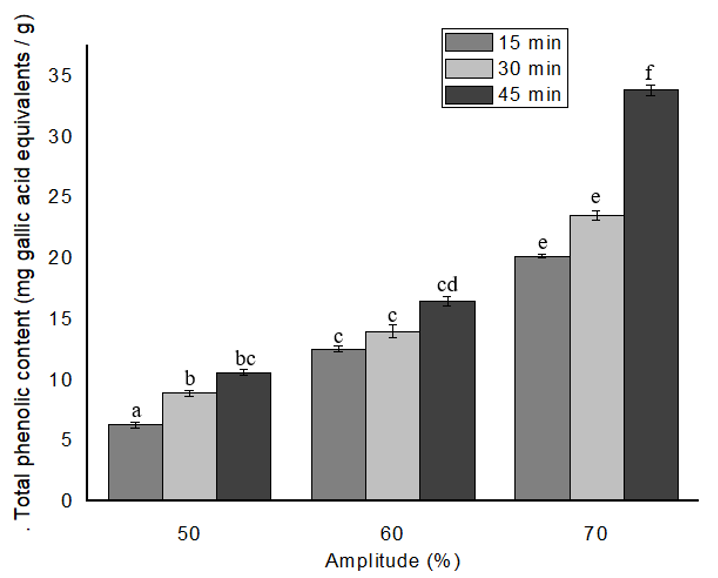 |
|
Wet coffee waste (WCW) generated by the wet benefit process of the coffee, is mainly made up of coffee pulp and husk, and has been scarcely studied and reutilized. Therefore, the aim of this work was to investigate the in vitro and in vivo antifungal activity of an optimized WCW ethanolic-extract (OE) obtained by ultrasonication (amplitude 70%, sonication time 45 min). OE had total phenolic content of 33.8 mg gallic acid equivalents/g and antioxidant activity of 1790.1 µmol Trolox equivalents/g. OE showed a potent in vitro antifungal activity against A. niger, B. cinerea and R. stolonifer equivalent or superior to that of commercial synthetic carbendazim. Strawberries were wounded and inoculated with the three fungi for in vivo assays. After 5 d of inoculation, percentage of wounds presenting mold growth was of 16.7% (400 µg/mL of OE) and 38.2% (1000 µg/mL of carbendazim) for A. niger, and of 36.1% for B. cinerea and of 50.12% for R. stolonifer (2000 µg/mL of OE) compared to the 38.2% and 51.2% (1000 µg/mL of carbendazim), respectively. The efficient antifungal activity of OE can be mainly attributed to its majoritarian compounds chlorogenic acid (14.19 mg/g) and caffeic acid (1.18 mg/g), which represented 89.83% of the identified.
Keywords: wet coffee benefit waste; ethanolic extract; antioxidant activity; in vitro antifungal activity; in vivo antifungal activity.
|
|
 |

